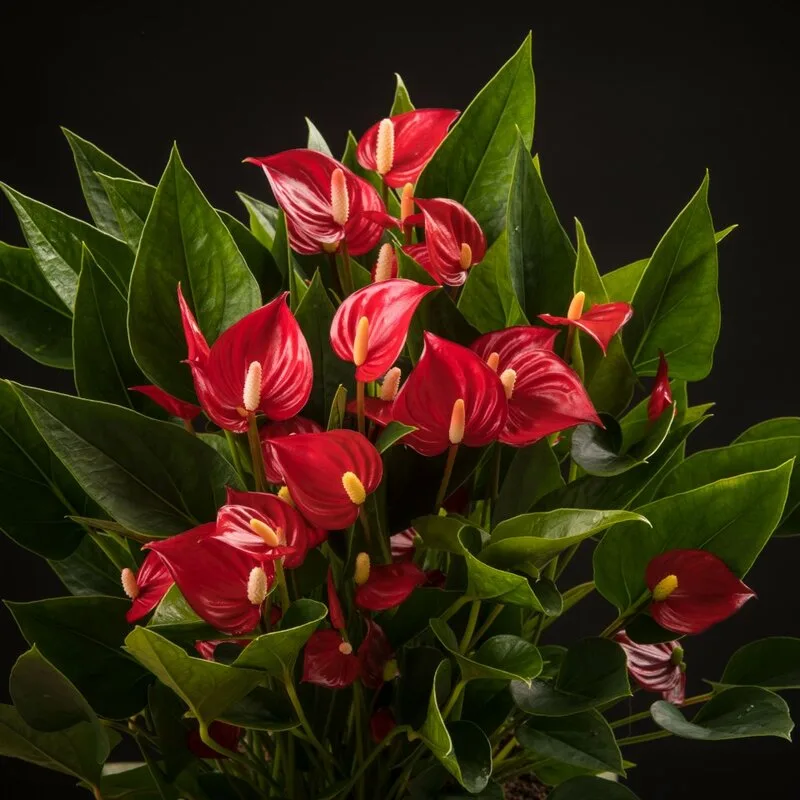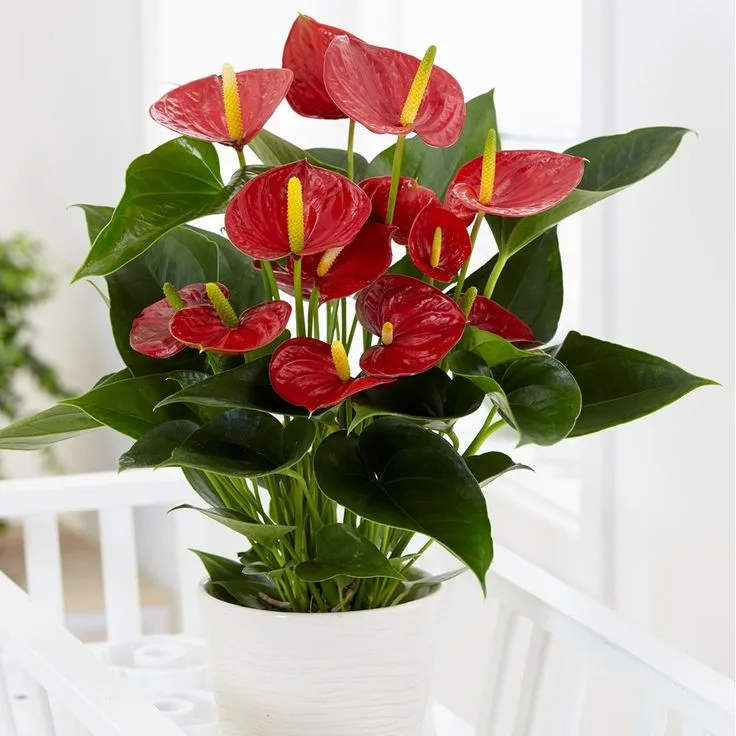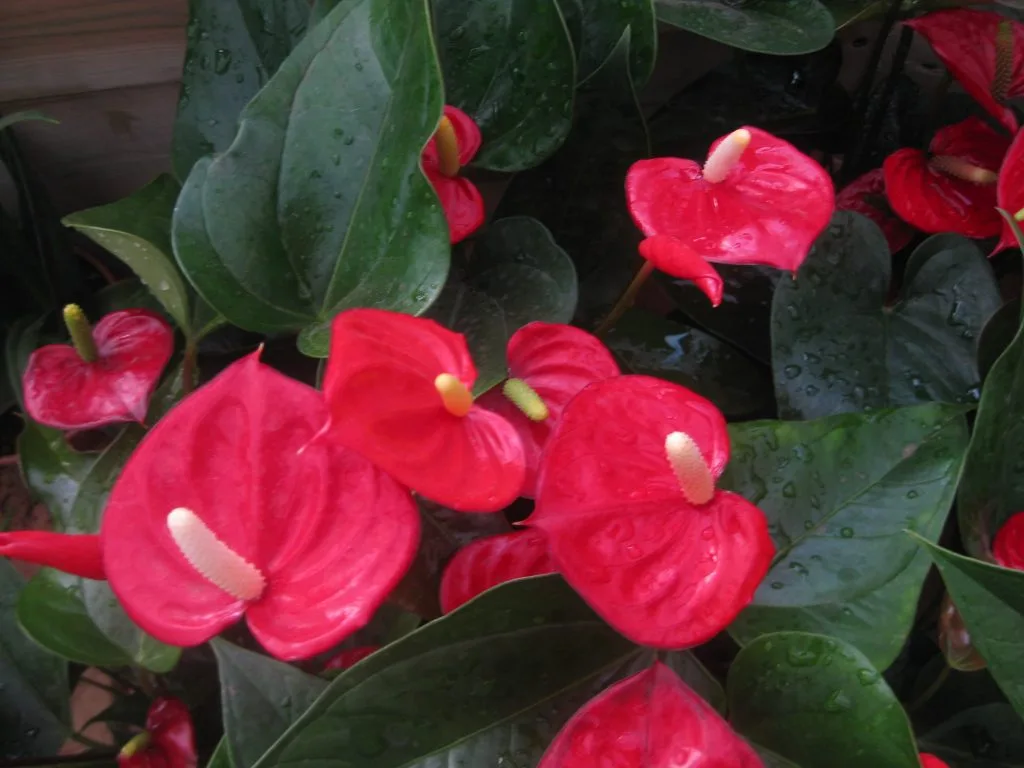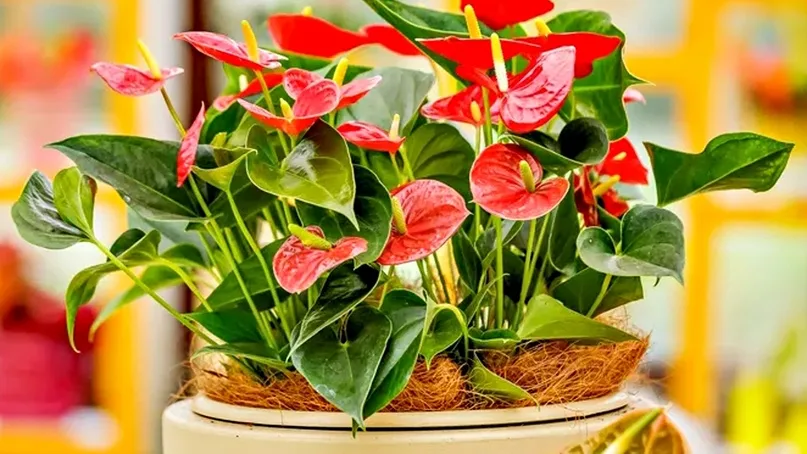índice
Presentation
The Mini Anthurium, scientifically known as Anthurium Mini Million, is a small botanical jewel that enchants with its exuberant flowering. Its glossy leaves and unique flowers bring a tropical atmosphere to any environment. This miniature variety of anthurium is prized by collectors and plant enthusiasts, providing a unique and charming growing experience.
Mini Million meaning
The name Mini Million highlights the abundance of tiny flowers that resemble millions of small pearls, forming a spectacular inflorescence. This anthurium, in addition to its captivating aesthetics, symbolizes prosperity and wealth in the language of flowers. Growing Mini Anthurium not only brings beauty to your home, but also evokes an atmosphere of exuberance and success.
| Common Name | Mini Anthurium |
|---|---|
| Botanical Name | Anthurium Mini Million |
| Family | Araceae |
| Type of Plant | Perennial herbaceous |
| Adult size | Small, average range 30 cm |
| Solar Exhibition | Half-shade to shade |
| Soil Type | Rich in organic matter, well drained |
| Soil pH | Slightly acidic to neutral (5.5 to 7.0) |
| Flowering Season | Throughout the year, especially in spring |
| Color of Flowers | Varies between shades of red, pink and white |
| Native Area | Tropical regions of Central and South America |
| Toxicity | Slightly toxic if swallowed, causing irritation to the skin and mucous membranes. |

How to Care for Mini Anthurium
Mini Anthurium, being a tropical plant, requires specific care to flourish in all its glory. Here are some guidelines to ensure it blooms exuberantly:
Light:
The Mini Anthurium prefers environments with half shade to shade, avoiding direct exposure to the sun. Places with diffused light are ideal for promoting healthy growth.
Soil:
Plant the Mini Anthurium in soil that is rich in organic matter and well-drained. Make sure the soil maintains good humidity, but avoid excessive accumulation of water to prevent the roots from rotting.
Water:
Always keep the soil moist, but avoid waterlogging. Water when the top of the soil is slightly dry. Water quality is crucial; use chlorine-free water to avoid damaging sensitive roots.
Temperature and Humidity:
Keep the temperature at around 18-25°C for healthy development. The Mini Anthurium appreciates higher humidity levels, especially in dry indoor environments. Spraying water around the plant can be beneficial.
Fertilization:
Fertilize the plant during the active growing season, usually in spring and summer. Use a balanced, diluted fertilizer every 4-6 weeks to provide the necessary nutrients.
By following these tips, you’ll provide Mini Anthurium with the ideal environment to thrive and show off its stunning inflorescences.

How to Make Mini Anthurium Cuttings
Choosing the Right Place:
Before starting the propagation process, select a location with conditions similar to the environment where the adult Mini Anthurium is growing. Make sure there is indirect light and sufficient humidity.
Preparing the Soil:
Use a light, well-drained substrate made from a mixture of garden soil, perlite and coconut fiber. Fill small containers with this soil to accommodate the seedlings.
Propagation by Clump Division:
- Carefully remove the mother plant from the pot, exposing the roots and the base of the clump.
- Divide the clump into sections, ensuring that each part has healthy roots and leaves.
- Plant each section in a new container with prepared soil.
Propagation by cuttings:
- Choose a healthy cutting by removing it from the mother plant.
- Cut the cutting, making sure it has at least two or three leaves and some roots.
- Plant the cutting in a container with moist soil, burying part of it in the substrate.
Post-planting care:
Keep the cuttings in a place protected from direct sunlight. Water moderately and provide a humid environment to stimulate rooting.
By following these simple steps, you’ll be able to propagate Mini Anthurium successfully, expanding your plant collection with this lovely variety.

Pests and Diseases
Common Pests:
- Mites: Small insects that can cause damage to leaves. Remove them with a jet of water or use neem oil.
- Bugs: Sucking insects that appear as white spots. Wipe off with a cotton pad soaked in alcohol.
- Aphids: Small insects that feed on the sap. Use a spray of soapy water or natural insecticide.
Frequent Illnesses:
- Root rot: Avoid waterlogging the soil and replant the plant in well-drained soil.
- Leaf spots: Keep the leaves dry and avoid overwatering.
- Mildew: Fungus that appears as a white substance. Use natural fungicides and maintain good air circulation.
Common Problems and Solutions:
- Yellow leaves: May indicate excess water. Reduce watering and check soil drainage.
- Brown Leaves at the Tips: Sign of dry air. Increase the humidity around the plant.
- Fallen leaves: Too much fertilizer. Reduce the frequency of fertilization.
By paying attention to these signs and acting promptly, you can keep your Mini Anthurium healthy and vibrant, ensuring exuberant growth.
Curiosities and Myths
Curiosities:
1. Variety of Colors:
The Mini Anthurium, Anthurium Mini Million, comes in an incredible variety of colors, including vibrant shades of pink, red and white, adding a touch of elegance to any environment.
2. Continuous Flowering:
This succulent is known for its ability to bloom for most of the year, providing a constant display of its exotic flowers.
3. Air Purifier:
In addition to its beauty, the Mini Anthurium also contributes to air quality, filtering out harmful substances and promoting a healthier environment.
Myths:
1. Need for Direct Sunlight:
Contrary to common myth, Mini Anthurium prefers indirect light. Prolonged exposure to direct sunlight can damage its delicate leaves.
2. Excessive Thinning for More Beautiful Flowers:
Although it needs regular watering, watering excessively will not result in more beautiful flowers. Keep a proper balance to avoid root problems.
3. Fast Size Increase:
Mini Anthurium grows moderately and expecting a rapid increase in size can lead to disappointment. Appreciating its delicate beauty is the key.
Exploring these curiosities and demystifying some misconceptions about the Mini Anthurium will broaden your understanding and allow you to enjoy this charming plant to the full.

Conclusion
Growing Mini Anthurium is a fascinating experience, full of vibrant colors and unique beauty. With a variety of shades and a remarkable ability to bloom continuously, this succulent stands out not only for its enchanting aesthetics, but also for its contribution to improving indoor air quality. By exploring its curiosities and debunking common myths, such as the need for direct sunlight, you can grow and enjoy this plant more consciously and successfully. Remember to provide the right amount of light, water and care to ensure that the Mini Anthurium blooms and shows off all its exuberance, adding a touch of lasting elegance to your green space.
Discover the charm of the Mini Anthurium and transform your environment with this versatile and engaging succulent. Whether in the office or at home, the enduring beauty of the Mini Million Anthurium is sure to win your heart.
Frequently Asked Questions
How often to water Mini Anthurium?
Mini Anthurium requires a balanced approach to watering. It is essential to keep the soil moist, but not soggy. It is recommended to water when the top of the soil is dry to the touch, usually every 1-2 weeks. The amount of water should be enough to completely moisten the soil.
What size is the Mini Anthurium?
The size of the Mini Anthurium can vary, but it usually reaches a height of 30 to 45 centimeters, making it a compact and perfect option for indoor spaces. Its leaves display an elegant shape, creating a small plant that stands out for its beauty in domestic environments.
How to care for a Mini Anthurium?
To care for the Mini Anthurium, it is crucial to provide bright indirect light, adequate watering and well-drained soil. Maintain humidity around the plant, avoid draughts and protect it from extreme temperatures. Fertilize monthly during the growing season and watch out for signs of pests. With this care, your Mini Anthurium will thrive, showing off its colorful and elegant flowers.







